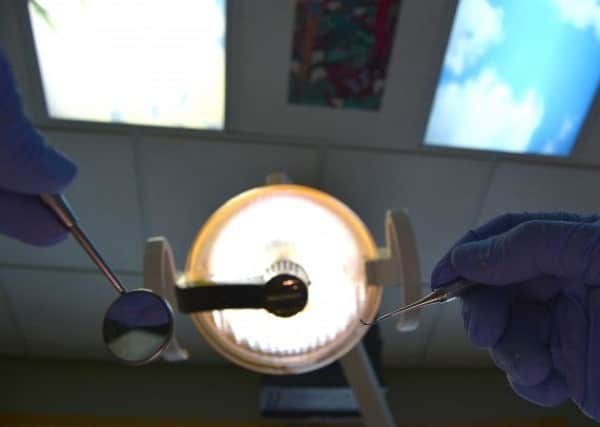Sharp contrasts in access to NHS dentists across Yorkshire


Professor Nigel Hunt, dean of the Faculty of Dental Surgery at the Royal College of Surgeons, said the fall was a result of a “decade of inertia” and it was “appalling” tooth decay remains the most common reason why five-to-nine-year-olds are admitted to hospital.
The Health and Social Care Information Centre (HSCIC) said its latest figures show there has been a “real reduction in the number of patients seen by an NHS dentist”.
Advertisement
Hide AdAdvertisement
Hide AdThey show the number of adult patients nationally seen in the two-year period leading up to April fell by 0.3 per cent to 30.08 million.
While 70% of adults saw an NHS dentist in Doncaster in the two years to June, just 52% did in Bradford, which had the lowest access figures of Yorkshire cities.
The contrast was even sharper between Hull and neighbouring East Riding (78% compared to just 45%) but this could be explained by the high numbers travelling into the city to see an NHS dentist.
Meanwhile the Oral Health Needs Assessment for Yorkshire and Humber 2015 says for five-year-old dental decay rates are the third worst in England.
Advertisement
Hide AdAdvertisement
Hide AdIn 12-year-olds there is significantly greater decay than the national average.
Adults are advised to visit the dentist between every three months and two years, but the National Institute for Health and Care Excellence recommends that the longest time between appointments for children is 12 months.
HSCIC figures show the number of children seen by an NHS dentist in the year leading up to March 31 was 6.9 million, representing just 60% of the child population. While in Hull 92% of children had seen a dentist since June 2013, just 67% did in Bradford.
The Royal College of Surgeons said the nation’s poor dental record was a combination of patient complacency with regard to looking after their teeth along with access to dental appointments, both of which need to be addressed by the Government.
Advertisement
Hide AdAdvertisement
Hide AdProf Hunt said: “This data reveals a decade of inertia in access to dentistry. In the last two years approximately 50% of adults and almost a third of children haven’t seen a dentist. Routine visits are vital to maintaining good oral health. It’s appalling that tooth decay remains the most common reason why five-to-nine-year-olds are admitted to hospital; in some cases for multiple tooth extractions under general anaesthetic - despite tooth decay being almost entirely preventable.
“The new Government needs to urgently review why access is not improving and launch a national campaign to stress the importance of seeing a dentist.”
HSCIC figures show that the number of permanent fillings and sealant restorations in children increased by 0.1%, but other procedures such as teeth extractions and root canal therapy went down. Nearly 24,000 dentists performed NHS work during 2014/15 - nearly 3,800 more than in 2006/07.
Sara Hurley, chief dental officer at NHS England, said: “NHS England is pleased to see access to an NHS dentist continues to improve.
Advertisement
Hide AdAdvertisement
Hide Ad“The significant increase in treatment courses, including the provision of fluoride varnish, underlines that the message that ‘prevention is better than cure’ is getting through. This is encouraging and means that as a nation our oral health should continue to improve as we work across the whole of the health service to improve understanding.”